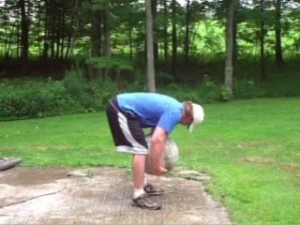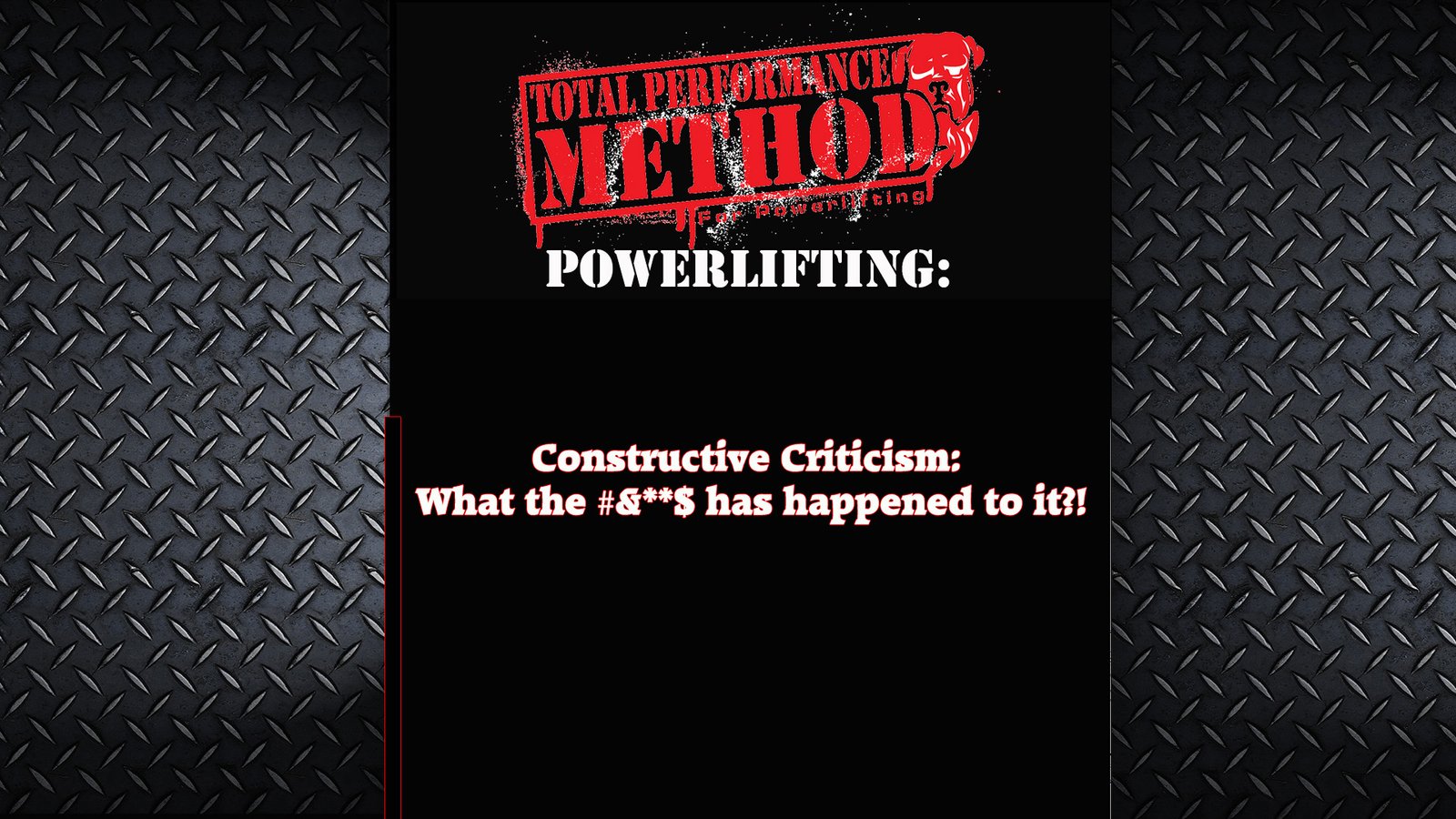by Steve Slater
Atlas Stones are a fundamental test of strength in many strongman competitions, and they have also become a staple among strength training enthusiasts who are looking for the ultimate strength workout.
Stones literally tax everything from head to toe. In fact, try not contracting any major muscle group like your legs, glutes, back, chest or biceps during a stone lift, and let’s see if the stone even comes off the ground – fat chance.
The world record atlas stone lifted by a strong woman competitor is over 300lbs, and the mens’ world record is 529lbs (July 2011). However, you can get the very same benefits just by lifting lighter atlas stones.
You’ve just got to know how to do it right! So let’s get into that right now.
LEARNING THE STONES
It’s time to get your hands on some stones and get to work.
At first, it can be easy to get frustrated with atlas stones as they fight you the whole way up. Since they are round, they make your job of lifting them very difficult, and once they start to get loose on you, they often win the battle. Learning how to conquer the atlas stones takes time and requires understanding the proper technique. Once you master the technique you then can really start to work on using the stones to take you to a new level of fitness.
SAFETY FIRST
Stone lifting is generally done by pulling the stone from the ground and either placing it on top of a platform or barrel, or it is put over a bar of a designated height (usually 4 feet or higher). Whatever you choose to lift the stone onto or over, make sure that it is stable. Here are some examples of loading strategies we have used.
Normally, we lift the stone over an adjustable strongman yoke bar. We also at times use solid platforms to load several stones one after the other. To make the platforms, we fastened wood pallets on top of each other, and attached plywood to the front and around all sides. We sometimes use whisky barrels or oil drums, but if you use a barrel watch out for the lip, as it can be a finger pincher.
With all platforms, please use caution making sure the back side of the platform is braced; this will keep the platform stable so it will not tip if the stone hits it. Once you’re more experienced you can work on shouldering the lighter stones. Incidentally, the world record for a shouldered stone is held by Derek Poundstone. In 2009 he shouldered a massive stone in the range of 420 lbs.
If you practice stone shouldering, make sure you use plenty of rubber mats to drop the stones on. At our club we use four of the 5/8” thick stall mats with plywood under them so we can just drop the stones off of our shoulder or the top platforms without damaging the floor or the stones.
As for lifting the stones, there are some basic cautions to be concerned with for safety.
I have seen athletes twist at the top of a stone load. If you are going heavy or you are doing reps to failure for conditioning, once you get the stone to the tip of the platform, do not pause in that top position longer than a few seconds, and do not twist in order to try to get it onto the platform, as accidents have happened at this point before.
HEIGHT OF PLATFORM
If you use a platform for stone loading, for most stone training I think it is best to use a platform that is around sternum height or somewhere below. This is a good position, especially if you are training for a particular sport that requires hip drive and/or triple extension like a football player exploding off the line of scrimmage or a swimmer leaping off the diving block.
As a variation and progression from the normal platform, we also sometimes use a hanging target. It may be a jump stretch band or a large rope hanging from a rafter or a power rack. We dangle the band or rope from the rack as a goal upon which to touch the stone. When you touch the top of the stone to the bottom of the band, you have achieved your goal. You can also have a partner pull the band/rope up slightly after each successful rep, so you try to increase the height on each rep.
LEARNING THE TECHNIQUE
I will discuss the best way that I have found to lift an Atlas Stone, although we all may lift them slightly differently.
In training, strive to keep good form so you can strengthen your body using the safest way of lifting. As for myself, when it comes to lifting the stone, I first position the stone about 6”-8” away from what I may be loading it onto. I then face the Atlas Stone and straddle my feet over it so that my calves are around 1” from it on both sides. I make sure I stand almost directly over the stone so the balls of my feet are positioned at the center point of it.

Next, I squat down to near parallel, grabbing the stone with my arms straight down and hug the center of it with my forearms and hands trying to get my fingers as far under the stone as possible without smashing them. My finger nails will likely be touching the ground at this point.

I then squeeze hard with my fingers, hands, forearms and begin to pull with my legs and entire back. This is when I think of contracting with everything I have. My legs straighten slightly as the stone begins to come up, although the legs are never completely straight. As the stone starts to pass my knees, I then re-bend my knees back into a near parallel squat and I roll the stone onto my lap. If possible, I also may try to walk my feet in slightly. Since I’m resting the stone on my lap, bringing the feet together will position the stone higher on the abdomen when I start the second part of the lift.

From here, I will reposition my hands more towards the top of the stone maybe about 1/3rd of the way up but not all the way on top or the stone will drop down. Your palms will not be facing each other any longer. They are now angled more towards the ground. I squeeze the stone again and press it against my chest so my chin is as far over the stone as possible. Then I will dip forward and down slightly to get a stretch reflex and pull back explosively with my upper body, forcefully standing up and driving my hips forward.

If I am just lifting the stone to the high chest and then returning it to the floor, I try to keep the center of the stone directly over my feet and lean back slightly to keep my balance. If I am loading the stone to a platform or over a marker, then I will propel it upward and forward, as shown in the image above. If loading on the platform, I also quickly reposition my arms just in case I don’t quite make it and I have to push it fully onto the platform.
BEGINNER WORKOUTS
You now have an idea on technique. Let’s look at how to train with the stones.
For a beginner workout, I suggest you work with a light stone and focus on reps so you get used to the proper technique as well as conditioning your muscles for something they are not used to doing.
Even if you are a very strong athlete, I suggest that you keep to a stone around 200lbs or under to start with. If you are in good condition and you are new to stone lifting, try not to exceed a stone that is anything above 70% of your bodyweight. In other words, if your bodyweight is 100lbs, use about a 70lb stone, or if you weigh around 180lbs you would use about a 130lb stone, plus or minus a few pounds.
Take this stone and load it for 2-3 sets of 5-8 reps and 2-3 times per week for the first three weeks so you work on technique and conditioning. You may be tempted to go heavier, but just remember the best is yet to come so take it slow. Just try to improve your technique with the lighter stone.
For a stone workout that is centered on hardcore conditioning, you might try the following variations. Pick out a lighter stone and break the stone lifting technique down into segments. You will do the following stone lifting segment work for 3 sets of 10 reps.
The first 10 reps will be the LAP, SQUAT, DROP drill. To begin, pick up the stone, LAP it to the SQUAT position and stand up driving hard with the hips, pushing the stone upward and forward as high as you can. Then, DROP the stone on rubber mats and repeat.
For the next 10 reps, try the LAP, SQUAT and RETURN drill. In this drill, you will LAP the stone, SQUAT it up, and then this time RETURN the stone under control to your lap. Do this for 10 reps but DO NOT drop the stone.
Rest again and for the last 10 reps, do the LAP AND DROP drill, lapping the stone and then dropping it back down between your legs. Repeat this for 10 reps.
If you still have some gas in the tank, you might also finish off with 10 reps of bent over rows with an even lighter stone.
Start light with this series of drills because this can leave you exhausted and sore for days.
REVIEW
As you can see, Atlas Stone lifting can be a very beneficial practice that can quickly have you building muscle, burning calories, and becoming more powerful. This is particularly helpful for power and combat athletes that need to drive with the lower body, and also certain professions such as Law Enforcement and Corrections Officers who have to be able to subdue perpetrators.
With all the benefits of stone training, there are some risks involved, but the benefits far outweight the risks. As you train, start out light and use caution. Also, condition yourself to the stresses of stone lifting. As you progress, you can add equipment into the mix such as loading platforms, hanging targets, and drop areas, and before you know it you will be performing drills for speed, explosiveness, and conditioning. In time, you will be extremely rugged.
For more information on Atlas Stone training and many other types of Strongman Training events, please check out my Strongman DVD, Introduction to Strongman Training. Loaded with technique and safety tips, I can show you how to correctly train like a Strongman or Strongwoman. And whether you ever enter a competition or not, you will definitely be a stronger version of yourself in no time.
Steve Slater
Click here for the Diesel Strongman DVD







Leave A Comment